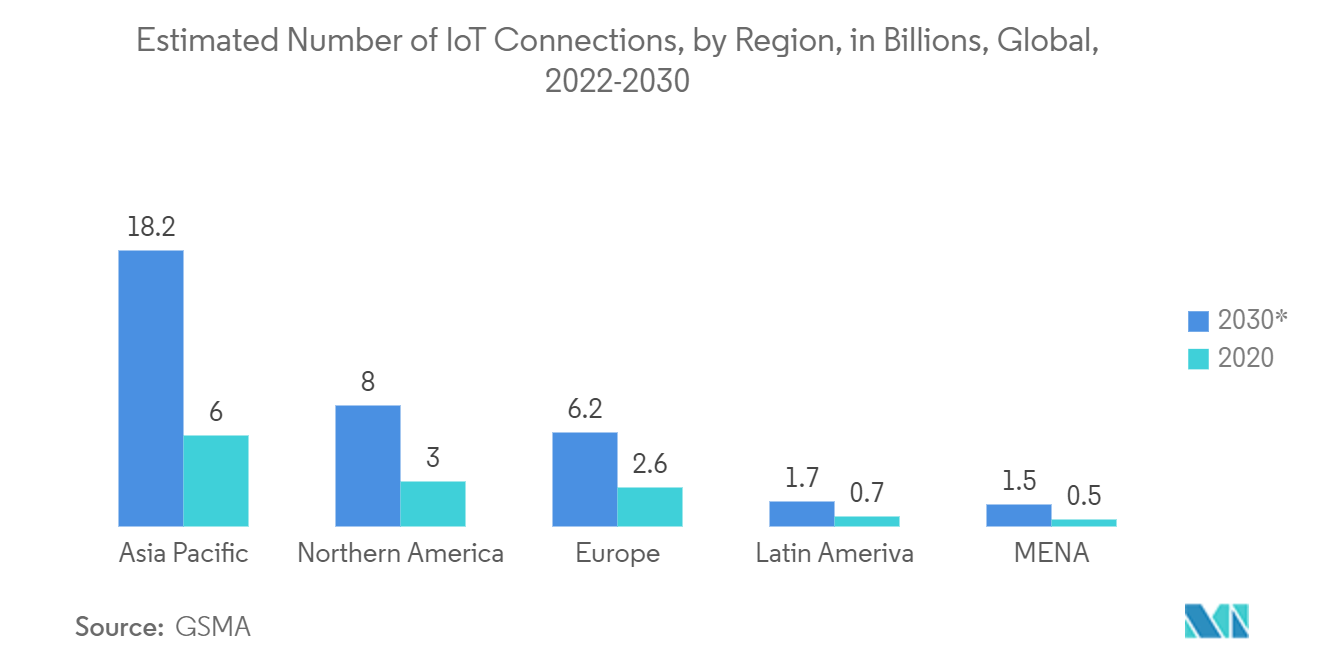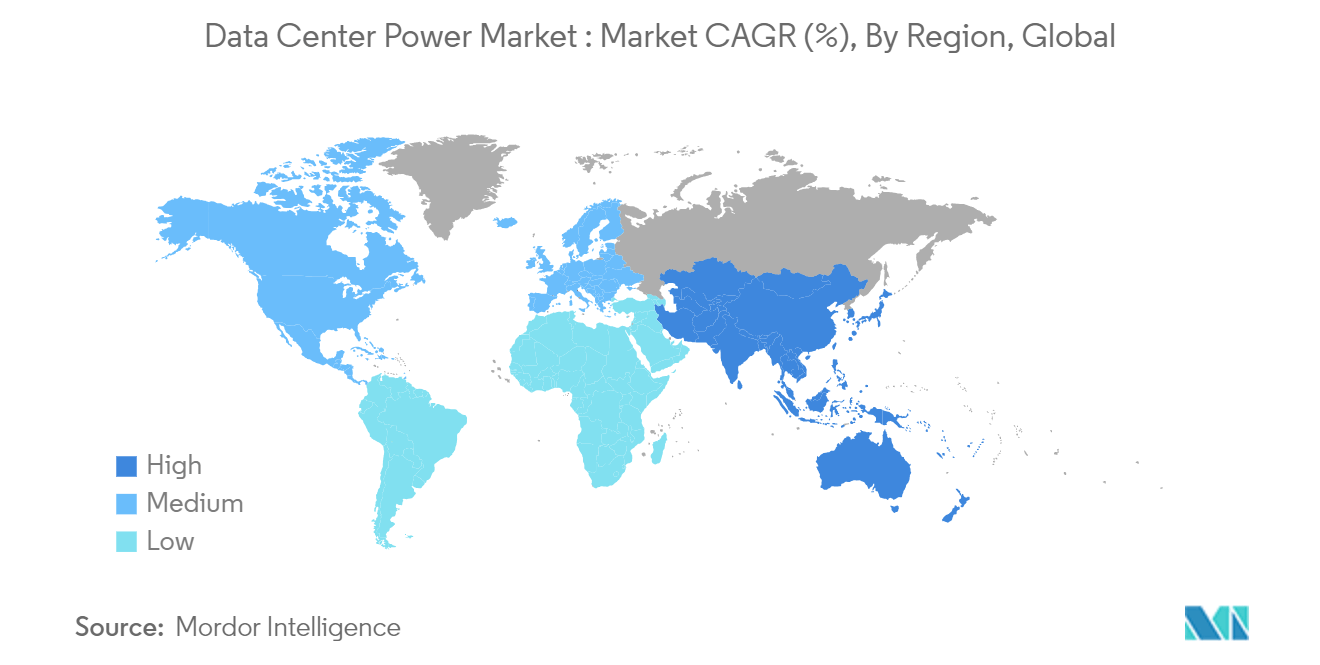Market Trends of Data Center Power Industry
UPS to be the Fastest Growing Solution Type
- In the case of critical IT equipment, large data centers use centralized, high-capacity, and uninterruptible power supply systems for power protection. By integrating the most recent power protection technologies, these systems have reached a new level of reliability and efficiency. The most reliable type of data center, UPS, or online double conversion, is capable of handling different input conditions, including power from backup generators, while providing computer-grade output to the essential load.
- According to GSMA, the number of Internet of Things (IoT) connections is expected to grow from 2020 to 2030, with an expected total of 24 billion enterprise IoT connections in 2030, along with social media, which has increased the amount of data generated and stored worldwide exponentially. Demand for data center infrastructure and investment in new technologies and innovations to improve energy efficiency, reduce costs, and enhance performance has been stimulated by this growth of data generation.
- Further, the growing digitalization in Asia-Pacific is boosting the number of data centers in the region, thereby contributing to the demand for UPS in the region. Moreover, the growing innovations in UPS that meet the increasing demand are analyzed to boost the market growth rate.
- For instance, in July 2023, ABB India’s Electrification business launched innovative UPS solutions for data centers. The first-of-its-kind sustainable UPS is part of the ABB EcoSolutions portfolio and complies with the ABB circularity framework. It was designed for high-density computing environments with the greatest efficiency rating and smallest footprint. This aligns with ABB Electrification's Mission to Zero for smart cities. It envisions a zero-emission reality for all and underscores its dedication to providing smart, safe, and sustainable power technologies to the worldwide data center industry.

Asia Pacific is Expected to Witness Growth
- The Chinese economy is witnessing a rapid digital transformation driven by the expansion of e-commerce, cloud computing, big data analytics, and artificial intelligence. This surge in digital activities led to a substantial increase in the number and size of data centers nationwide.
- Further, the Chinese government has recognized the strategic importance of data centers in supporting economic growth, innovation, and national development goals. As part of its "Internet Plus" initiative and the 14th Five-Year Plan, the government invests heavily in digital infrastructure, including data centers, and provides incentives to attract investments.
- The increasing reliance on internet services, including e-commerce, streaming media, online gaming, and social networking in Japan, has driven the need for high availability and reliability of data centers. As internet usage continues to grow, data center operators in Japan are investing in power solutions to ensure uninterrupted operations and prevent downtime within the data centers.
- In addition, urban centers in Japan are experiencing rapid population growth and urbanization, leading to increased demand for cloud services and global cloud service providers that generate big data represented by mega cloud platformers in major cities like Tokyo, Osaka, and Nagoya. Smart city initiatives, including deploying IoT sensors, smart grids, and energy management systems, require reliable data center power infrastructure to support their implementation. Hence, data center companies collaborate with power equipment companies to increase their market share.


